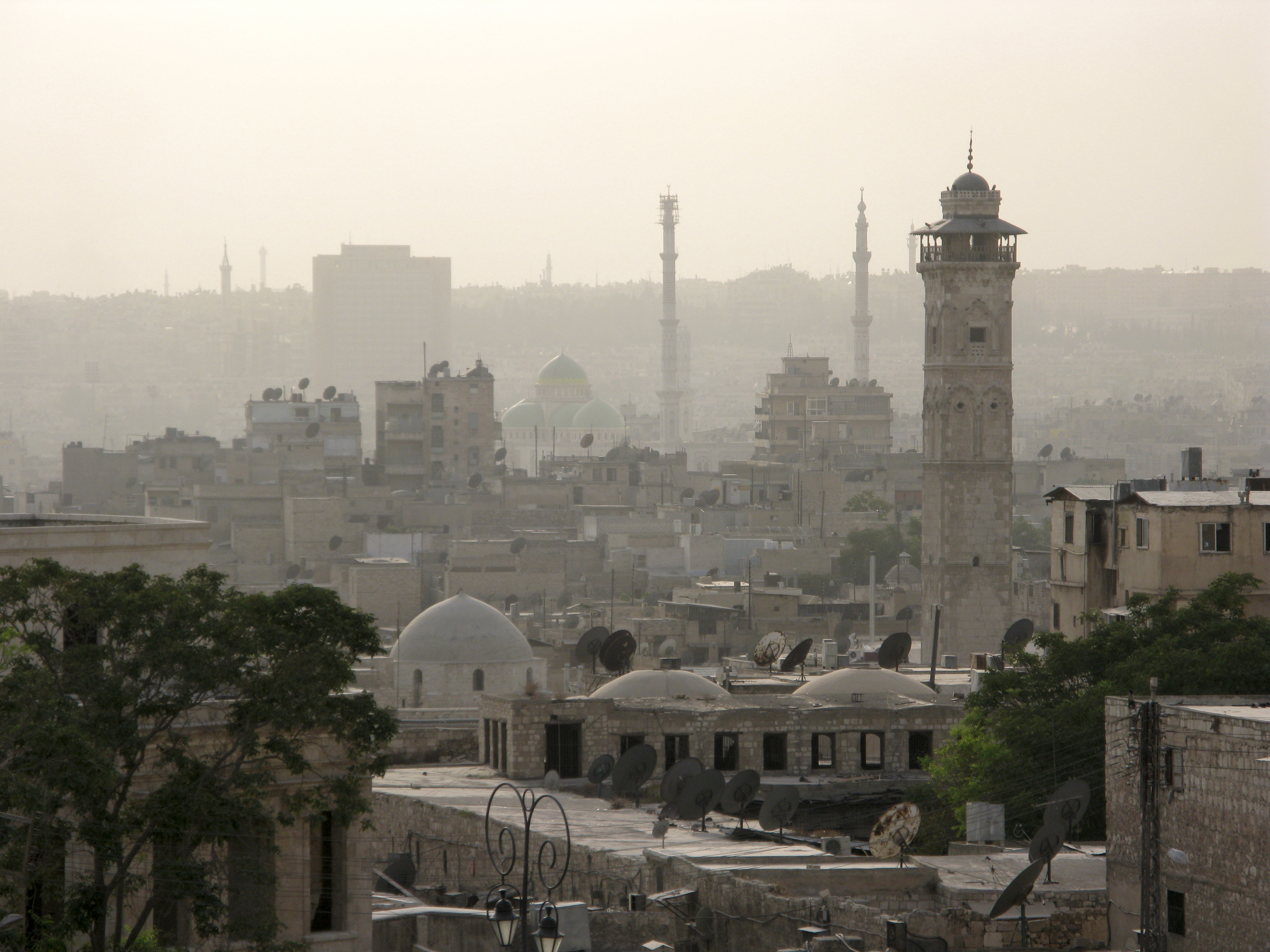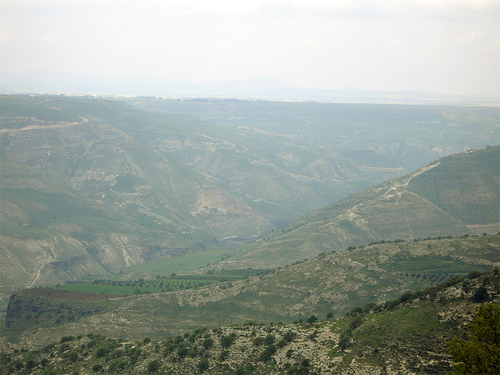|
Ariha, Idlib
Ariha (), also called Riha (), is a town in northwest Syria, administratively part of the Idlib Governorate, located south of Idlib. Nearby localities include Urum al-Jawz to the southwest, Sarja, Syria, Sarjah to the south, Kafr Latah to the southeast, Maarbalit, Maar Bilit to the east, Nayrab, Idlib, al-Nayrab to the northeast, Nahlaya and al-Mastumah to the north, Kurin, Syria, Kurin to the northwest and Maataram to the west. According to the Central Bureau of Statistics (Syria), Syria Central Bureau of Statistics, Ariha had a population of 39,501 in the 2004 census.General Census of Population and Housing 2004 . Central Bureau of Statistics (Syria), Syria Central Bureau of Statistics (CBS). Idlib Governorate. The town is also the administrative centre of the Ariha ... [...More Info...] [...Related Items...] OR: [Wikipedia] [Google] [Baidu] |
Syria
Syria ( ar, سُورِيَا or سُورِيَة, translit=Sūriyā), officially the Syrian Arab Republic ( ar, الجمهورية العربية السورية, al-Jumhūrīyah al-ʻArabīyah as-Sūrīyah), is a Western Asian country located in the Eastern Mediterranean and the Levant. It is a unitary republic that consists of 14 governorates (subdivisions), and is bordered by the Mediterranean Sea to the west, Turkey to the north, Iraq to the east and southeast, Jordan to the south, and Israel and Lebanon to the southwest. Cyprus lies to the west across the Mediterranean Sea. A country of fertile plains, high mountains, and deserts, Syria is home to diverse ethnic and religious groups, including the majority Syrian Arabs, Kurds, Turkmens, Assyrians, Armenians, Circassians, Albanians, and Greeks. Religious groups include Muslims, Christians, Alawites, Druze, and Yazidis. The capital and largest city of Syria is Damascus. Arabs are the largest ethnic group, ... [...More Info...] [...Related Items...] OR: [Wikipedia] [Google] [Baidu] |
Maataram
Maataram ( ar, معترم) is a Syrian village located in Ariha Nahiyah in Ariha District, Idlib ar, إدلبي, Idlibi , coordinates = , elevation_m = 500 , area_code = 23 , geocode = C3871 , blank_name = Climate , blank_info .... According to the Syria Central Bureau of Statistics (CBS), Maataram had a population of 2351 in the 2004 census. References Populated places in Ariha District {{IdlibSY-geo-stub ... [...More Info...] [...Related Items...] OR: [Wikipedia] [Google] [Baidu] |
Yaqut Al-Hamawi
Yāqūt Shihāb al-Dīn ibn-ʿAbdullāh al-Rūmī al-Ḥamawī (1179–1229) ( ar, ياقوت الحموي الرومي) was a Muslim scholar of Byzantine Greek ancestry active during the late Abbasid period (12th-13th centuries). He is known for his , an influential work on geography containing valuable information pertaining to biography, history and literature as well as geography. Life ''Yāqūt'' (''ruby'' or '' hyacinth'') was the '' kunya'' of Ibn Abdullāh ("son of Abdullāh"). He was born in Constantinople, and as his '' nisba'' "al-Rumi" ("from Rūm") indicates he had Byzantine Greek ancestry. Yāqūt was " mawali" to ‘Askar ibn Abī Naṣr al-Ḥamawī, a trader of Baghdad, Iraq, the seat of the Abbasid Caliphate, from whom he received the '' laqab'' "Al-Hamawī". As ‘Askar's apprentice, he learned about accounting and commerce, becoming his envoy on trade missions and travelling twice or three times to Kish in the Persian Gulf. In 1194 ‘Askar stopped his sala ... [...More Info...] [...Related Items...] OR: [Wikipedia] [Google] [Baidu] |
Qinnasrin
Qinnasrin ( ar, قنسرين; syr, ܩܢܫܪܝܢ, ''Qinnašrīn'', lit=Nest of Eagles), also known by numerous other romanizations and originally known as ( la, Chalcis ad Belum; grc-gre, Χαλκὶς, ''Khalkìs''), was a historical town in northern Syria. The town was situated south west of Aleppo on the west bank of the Queiq River (historically, the Belus) and was connected to Aleppo with a major road during Roman times. Some scholars propose that the ruins of Qinnasrin are located at Al-Hadher to the east of the Queiq River, while Chalcis' location was at the modern Syrian village of Al-Iss, Aleppo Governorate to the west of the river. Others think that Qinnasrin has always been located at al-Iss from the Hellenistic to the Ayyubid period. History Hellenistic and Roman periods According to Appian, Chalcis was founded by Seleucus I Nicator (reigned 305-281 BC), and named after Chalcis in Euboea. Chalcis was distinguished from Chalcis sub Libanum by its river, the a ... [...More Info...] [...Related Items...] OR: [Wikipedia] [Google] [Baidu] |
Aleppo
)), is an adjective which means "white-colored mixed with black". , motto = , image_map = , mapsize = , map_caption = , image_map1 = , mapsize1 = , map_caption1 = , pushpin_map = Syria#Mediterranean east#Asia#Syria Aleppo , pushpin_label_position = left , pushpin_relief = yes , pushpin_mapsize = , pushpin_map_caption = Location of Aleppo in Syria , coordinates = , subdivision_type = Country , subdivision_name = , subdivision_type1 = Governorate , subdivision_type2 = District , subdivision_type3 = Subdistrict , subdivision_name1 = Aleppo Governorate , subdivision_name2 = Mount Simeon (Jabal Semaan) , subdivision_name3 = Mount Simeon ... [...More Info...] [...Related Items...] OR: [Wikipedia] [Google] [Baidu] |
Ayyubid
The Ayyubid dynasty ( ar, الأيوبيون '; ) was the founding dynasty of the medieval Sultanate of Egypt established by Saladin in 1171, following his abolition of the Fatimid Caliphate of Egypt. A Sunni Muslim of Kurdish origin, Saladin had originally served Nur ad-Din of Syria, leading Nur ad-Din's army in battle against the Crusaders in Fatimid Egypt, where he was made Vizier. Following Nur ad-Din's death, Saladin was proclaimed as the first Sultan of Egypt, and rapidly expanded the new sultanate beyond the frontiers of Egypt to encompass most of the Levant (including the former territories of Nur ad-Din), in addition to Hijaz, Yemen, northern Nubia, Tarabulus, Cyrenaica, southern Anatolia, and northern Iraq, the homeland of his Kurdish family. By virtue of his sultanate including Hijaz, the location of the Islamic holy cities of Mecca and Medina, he was the first ruler to be hailed as the Custodian of the Two Holy Mosques, a title that would be held by all subsequent ... [...More Info...] [...Related Items...] OR: [Wikipedia] [Google] [Baidu] |
Jund Qinnasrin
''Jund Qinnasrīn'' ( ar, جُـنْـد قِـنَّـسْـرِيْـن, " military district of Qinnasrin") was one of five sub-provinces of Syria under the Umayyad and Abbasid Caliphates, organized soon after the Muslim conquest of Syria in the 7th century CE. Initially, its capital was Qinnasrin, but as the city declined in population and wealth, the capital was moved to Aleppo. By 985, the district's principal towns were Manbij, Alexandretta, Hama, Shaizar, Ma'arrat al-Nu'man, Samosata, Jusiya, Wadi Butnan, Rafaniyya, Lajjun, Mar'ash, Qinnasrin, al-Tinat (possibly ancient Issus), Balis, and Suwaydiyya. History Originally a part of Jund Hims, the first Umayyad caliph Mu'awiya I established the Jund Qinnasrin when he defeated Hasan ibn Ali, and subsequently detached the people of that area from their allegiance to him. 9th century Muslim historian al-Biladhuri says, however, that it was Muawiya's successor Yazid I who founded the district after separating nor ... [...More Info...] [...Related Items...] OR: [Wikipedia] [Google] [Baidu] |
Amr Ibn Al-As
( ar, عمرو بن العاص السهمي; 664) was the Arab commander who led the Muslim conquest of Egypt and served as its governor in 640–646 and 658–664. The son of a wealthy Qurayshite, Amr embraced Islam in and was assigned important roles in the nascent Muslim community by the Islamic prophet Muhammad. The first caliph Abu Bakr () appointed Amr as a commander of the conquest of Syria. He conquered most of Palestine, to which he was appointed governor, and led the Arabs to decisive victories over the Byzantines at the battles of Ajnadayn and Yarmouk in 634 and 636. Amr launched the conquest of Egypt on his own initiative in late 639, defeating the Byzantines in a string of victories ending with the surrender of Alexandria in 641 or 642. It was the swiftest of the early Muslim conquests. This was followed by westward advances by Amr as far as Tripoli in present-day Libya. In a treaty signed with the Byzantine governor Cyrus, Amr guaranteed the security of Egy ... [...More Info...] [...Related Items...] OR: [Wikipedia] [Google] [Baidu] |
Rashidun Caliphate
The Rashidun Caliphate ( ar, اَلْخِلَافَةُ ٱلرَّاشِدَةُ, al-Khilāfah ar-Rāšidah) was the first caliphate to succeed the Islamic prophet Muhammad. It was ruled by the first four successive caliphs of Muhammad after his death in 632 CE (11 AH). During its existence, the empire was the most powerful economic, cultural, and military force in West Asia. The caliphate arose following Muhammad’s passing in June 632 and the subsequent debate over the succession to his leadership. Muhammad's childhood friend and close companion Abu Bakr (), of the Banu Taym clan, was elected the first caliph in Medina and he began the conquest of the Arabian Peninsula. His brief reign ended in August 634 when he died and was succeeded by Umar (), his appointed successor from the Banu Adi clan. Under Umar, the caliphate expanded at an unprecedented rate, ruling more than two-thirds of the Byzantine Empire and nearly the entire Sasanian Empire. Umar was assassinated in ... [...More Info...] [...Related Items...] OR: [Wikipedia] [Google] [Baidu] |
Christianity
Christianity is an Abrahamic monotheistic religion based on the life and teachings of Jesus of Nazareth Jesus, likely from he, יֵשׁוּעַ, translit=Yēšūaʿ, label=Hebrew/Aramaic ( AD 30 or 33), also referred to as Jesus Christ or Jesus of Nazareth (among other names and titles), was a first-century Jewish preacher and religious .... It is the Major religious groups, world's largest and most widespread religion with roughly 2.38 billion followers representing one-third of the global population. Its adherents, known as Christians, are estimated to make up a majority of the population in Christianity by country, 157 countries and territories, and believe that Jesus in Christianity, Jesus is the Son of God (Christianity), Son of God, whose coming as the Messiah#Christianity, messiah was Old Testament messianic prophecies quoted in the New Testament, prophesied in the Hebrew Bible (called the Old Testament in Christianity) and chronicled in the New Testamen ... [...More Info...] [...Related Items...] OR: [Wikipedia] [Google] [Baidu] |
Antioch
Antioch on the Orontes (; grc-gre, Ἀντιόχεια ἡ ἐπὶ Ὀρόντου, ''Antiókheia hē epì Oróntou'', Learned ; also Syrian Antioch) grc-koi, Ἀντιόχεια ἡ ἐπὶ Ὀρόντου; or Ἀντιόχεια ἡ ἐπὶ Δάφνῃ "Antioch on Daphne"; or "Antioch the Great"; la, Antiochia ad Orontem; hy, Անտիոք ''Antiokʽ''; syr, ܐܢܛܝܘܟܝܐ ''Anṭiokya''; he, אנטיוכיה, ''Anṭiyokhya''; ar, أنطاكية, ''Anṭākiya''; fa, انطاکیه; tr, Antakya. was a Hellenistic, and later, a Biblical Christian city, founded by Seleucus I Nicator in 300 BC. This city served as the capital of the Seleucid Empire and later as regional capital to both the Roman and Byzantine Empire. During the Crusades, Antioch served as the capital of the Principality of Antioch, one of four Crusader states that were founded in the Levant. Its inhabitants were known as ''Antiochenes''; the city's ruin lies on the Orontes River, near Antakya, t ... [...More Info...] [...Related Items...] OR: [Wikipedia] [Google] [Baidu] |
Eastern Roman Empire
The Byzantine Empire, also referred to as the Eastern Roman Empire or Byzantium, was the continuation of the Roman Empire primarily in its eastern provinces during Late Antiquity and the Middle Ages, when its capital city was Constantinople. It survived the fragmentation and fall of the Western Roman Empire in the 5th century AD and continued to exist for an additional thousand years until the fall of Constantinople to the Ottoman Empire in 1453. During most of its existence, the empire remained the most powerful economic, cultural, and military force in Europe. The terms "Byzantine Empire" and "Eastern Roman Empire" were coined after the end of the realm; its citizens continued to refer to their empire as the Roman Empire, and to themselves as Romans—a term which Greeks continued to use for themselves into Ottoman times. Although the Roman state continued and its traditions were maintained, modern historians prefer to differentiate the Byzantine Empire from Ancient ... [...More Info...] [...Related Items...] OR: [Wikipedia] [Google] [Baidu] |





